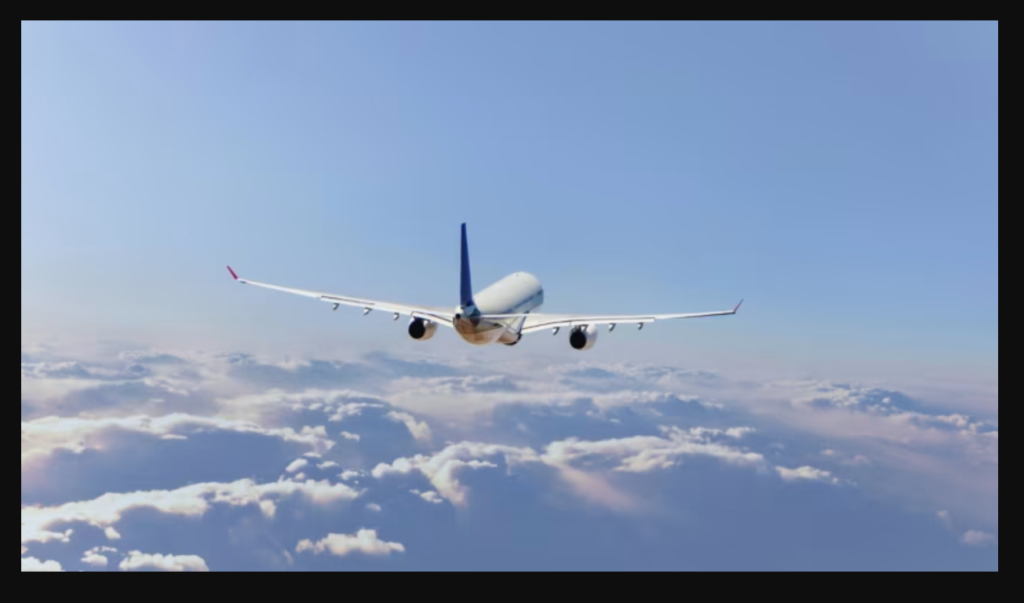Clear-air turbulence, which is difficult to forecast, is expected to intensify as climate change worsens.
Bad news for nervous fliers. The next time you’re gripping the armrests during yet another bumpy flight, know that the worsening climate crisis might be to blame.
While it’s largely considered a normal occurrence, turbulence can cause occasional jolts and drops that may unsettle passengers. In some cases, particularly when turbulence is strong, it can even pose a potential danger.
On Friday (Jun 16), five crew members were injured after a British Airways (BA) flight bound for London turned back to Singapore due to a “rare episode of severe turbulence”.
Seven people were also taken to hospital in March after a Lufthansa flight from Texas to Frankfurt experienced a severe episode over Tennessee.
A recent study by the University of Reading’s Department of Meteorology has helped to clear the air on what appears to be an increase in such incidents.
The findings showed that more turbulence of a certain kind, known as clear-air turbulence (CAT), was caused in recent years by the changes in wind speed due to warmer air.
It is also projected to intensify in response to future climate change.
Clear-air turbulence is of particular concern as it is “invisible”, often occurring with no visible warning in the sky ahead. This means it is difficult to observe in advance and challenging to forecast.
CLIMATE CHANGE AND TURBULENCE
The study, published in the Geophysical Research Letters journal in June, analysed global CAT trends from 1979 to 2020.
Clear-air turbulence, as defined by the US Federal Aviation Administration (FAA), is the “point at which unsecured objects begin to move, and at which people find it difficult to move around inside the cabin”.
“Following a decade of research showing that climate change will increase clear-air turbulence in the future, we now have evidence suggesting that the increase has already begun,” research co-author Professor Paul Williams was quoted as saying in several media reports.
For example, researchers found that severe turbulence over the North Atlantic – one of the world’s busiest flight routes – was 55 per cent more frequent in 2020 than in 1979.
Statistically significant changes were also observed over Europe and the Middle East, as well as the South Atlantic and Eastern Pacific. According to the BBC, Prof Williams said the increase in turbulence was due to more wind shear, or a difference in wind speeds, in the jet stream.
Turbulence hence forms when changes in wind speed are caused by warmer air from carbon emissions.
The study also found that regions over western ocean basins are “hot spots” for CAT, partly due to how jet streams “tend to be fastest over the ocean”.
“It is also partly because there is a large zonal temperature contrast between the ocean and continent at the western boundary, especially in winter, due to their different specific heat capacities.
“These horizontal temperature gradients contribute to vertical wind shear, which in turn contribute to CAT.”
American news website The Verge reported last Wednesday that another study found an average increase of between 9 per cent and 14 per cent in CAT each season “for every degree Celsius of global warming moving forward”.
Early in June, scientists warned that the world was warming at a record 0.2 degrees Celsius per decade.
Summers and busy travel seasons when there is typically less turbulence are expected to see a bigger increase than winters, which are historically seasons with the most turbulence, reported The Verge, adding that summers in 2050 could be as turbulent as winters were in the 1950s.
WHAT ARE AIRLINES DOING?
The study highlighted how CAT is difficult to observe in advance of an aircraft’s track using remote sensing models.
It added that aviation meteorologists also face challenges in forecasting CAT due to current Numerical Weather Prediction models that “have grid sizes that are many times larger than the turbulent eddies that affect aircraft”.
The National Geographic reported in March that more than 12,000 Delta Airlines pilots currently use tablets installed with an algorithm that analyses data on factors such as wind speed, air pressure and roll angle to check conditions along flight paths.
It added that international carriers including Qantas, Air France and Lufthansa will also be using the tool.
In a report by The Washington Post, the Federal Aviation Administration said it is encouraging airlines to enhance their training programmes and communication efforts regarding turbulence risks.
The International Air Transport Association (IATA) announced in June that Japanese carrier ANA and Canada’s WestJet have joined its Turbulence Aware platform, which was launched in 2018 to help airlines mitigate turbulence by gathering anonymised turbulence data from participating airlines
WHAT ARE THE EFFECTS ON THE AVIATION INDUSTRY?
The research found that turbulence is estimated to cost the aviation industry about US$200 million per year in the United States alone.
Some of these costs, it said, arise from additional airframe fatigue. This necessitates maintenance and results in a subsequent loss of productivity. Airframe damage also occurs occasionally.
Researchers added that each additional minute spent “traversing turbulence causes fatigue and increases wear-and-tear”.
“Passengers and crew suffer injuries, some requiring costly hospital treatment,” it added.
According to data released by the FAA in March, the number of people – both crew and passengers – who were injured from severe turbulence amounted to 163 from 2009 to 2022.
Article Credits: CNA

Pingback: Under Siege: Earth’s “Living Skin” Under Threat From Climate Change - SLSV - A global media & CSR consultancy network
Pingback: Green causes get less than 10 pc of CSR money; platform launched to up climate funding - SLSV - A global media & CSR consultancy network